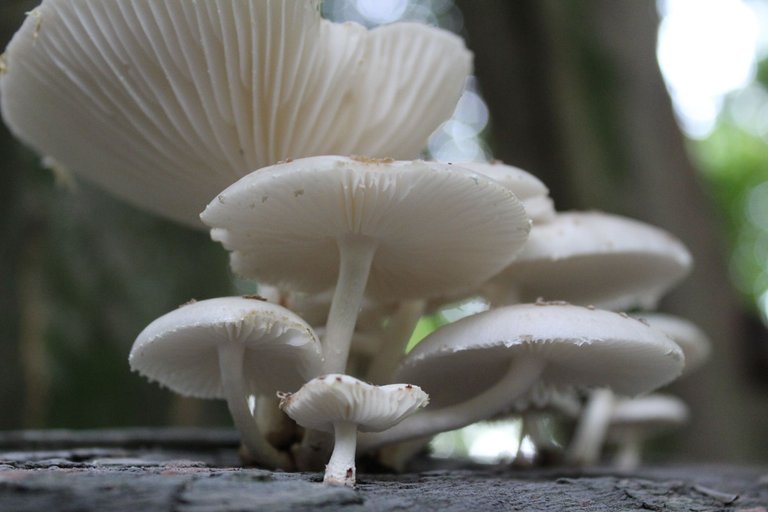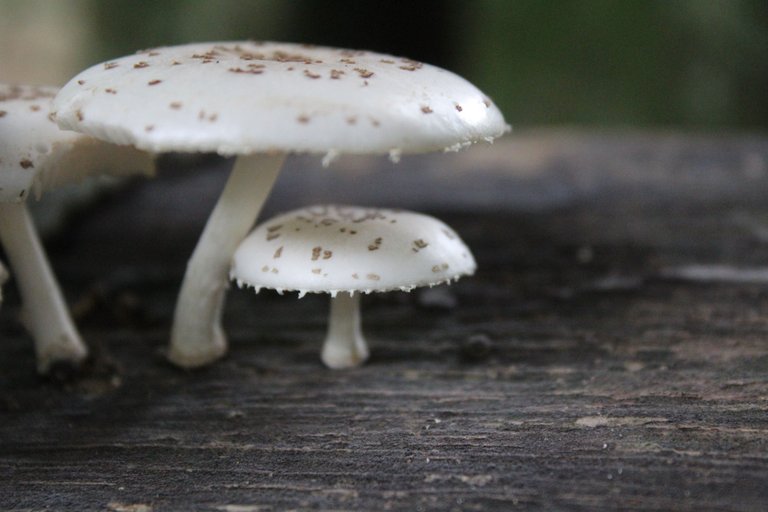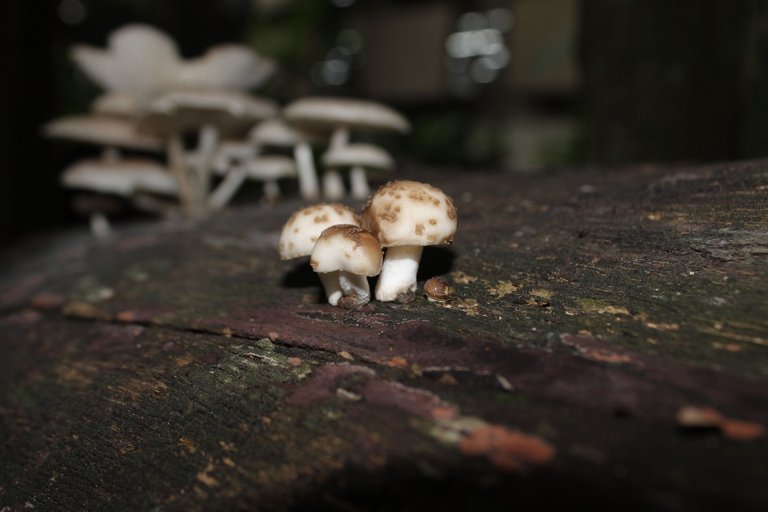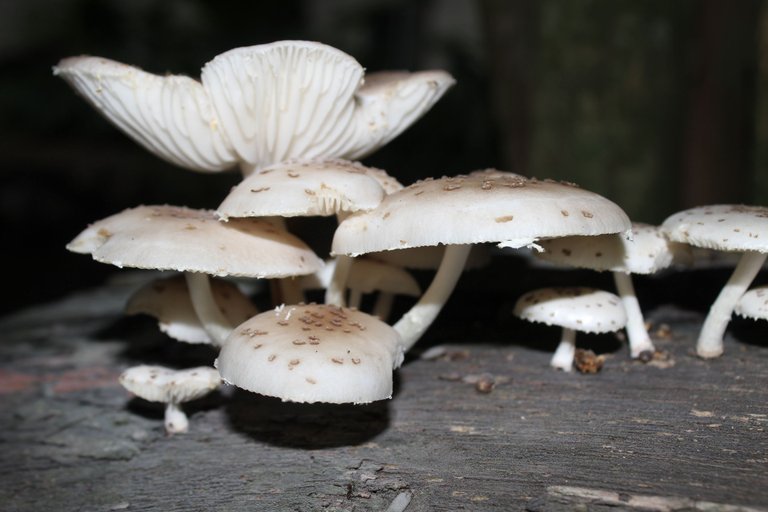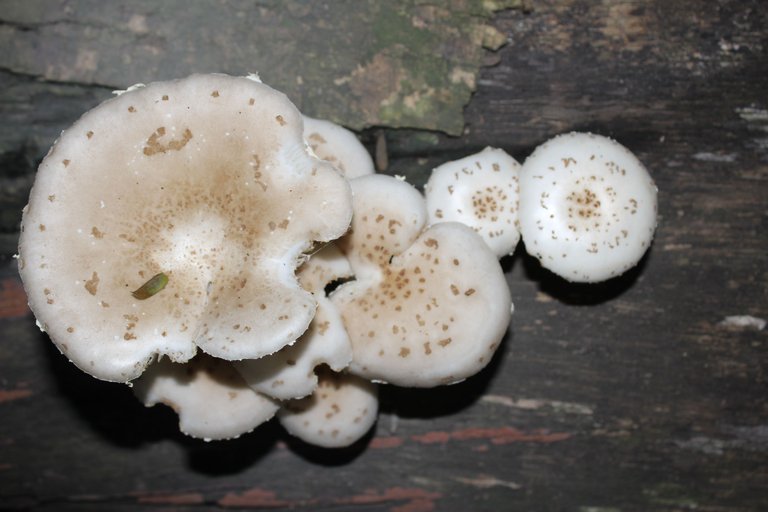Oudemansiella canarii
Walking in search of a place where I could have visual contact with nature, and at the same time a connection to be able to study, I found a small but very big world. I found it, I found the place and I found a lot of mushrooms, but I didn't have my camera with me. So a few days later I planned to go out to the same place to see if they were still there or if there were other specimens.
So one day I left the house on my bike, with my camera on my back. It was a pleasant ride, wind in my face, the smell of fresh grass, bright sunshine, mild weather, with a few clouds overhead, which announced the imminence of a storm. This did not deter the joy of the heart to go out and look for mushrooms.
Here are the results:
Family Physalacriaceae
Genus Oudemansiella
Species Oudemansiella canarii
Distribution ranges from tropical America, Southeast Asia and Australia.
Growth is saprotrophic. Saprotrophic or lysotrophic nutrition is a process of chemoheterotrophic extracellular digestion. This process (saprotrophic nutrition) is related to the processing of decomposed organic matter.
Saprotrophic nutrition is often evidenced by fungi and soil bacteria.
Microscopic saprotrophic fungi are called saprobes.
Saprotrophic plants or bacterial flora are called saprophytes (sapro- ‘rotting material’ + -phyto ‘plant’). All plants previously thought to be saprotrophic are thought to be actually parasites of microscopic fungi or other plants.
Organisms that O. canarii may be associated with are certain types of bacteria, such as Spirochaeta cytophaga, due to their ability to break down cellulose. This relationship would be described as commensalistic because S. cytophaga helps to break down cellulose from decaying or rotting wood that O. canarii uses for nutrition.
O. Canarii is economically important for humans because, like some agaric mushrooms, it is edible. In a study conducted by Turk Pharmacology, O. canarii was found to have antioxidant properties. In addition, the study yielded several bioactive and beneficial compounds such as ‘phenol, flavonoid, ascorbic acid, B-carotene and lycopene’ (Acharya et al., 2019). These are all compounds that are beneficial to the human gastrointestinal tract.
Source
https://costarica.inaturalist.org/taxa/351659-Oudemansiella-canarii
#MUSHROOM #FUNGI #PHOTOGRAPHY #LIFE #NEOXIAN #WEATHER #HIVE #ENGLISH
